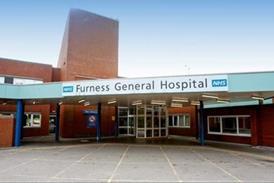- Number of people in England in top four vaccine priority groups around 11 million, according to estimates seen by HSJ
- Just over 750,000 doses given by late December, leaving more than 10 million to go to meet mid-February target
- NHS has previously publicly said it should be able to offer vaccine to all vulnerable groups by “late spring”
The prime minister has said the NHS will offer a first dose of covid-19 vaccine to top priority groups covering just over 12 million people in England by mid-February.
Boris Johnson set the target while also announcing a full national lockdown for England, including the closure of all schools to most pupils, on Monday evening.
So far, the NHS has only publicly said: “Based on current supply forecasts, by late spring it should be possible to have offered vaccination to all vulnerable groups.”
Mr Johnson said: “I can share with you tonight the NHS’ realistic expectations for the vaccine programme in the coming weeks. By the middle of February, if things go well and with a fair wind in our sails, we expect to have offered the first vaccine dose to everyone in the top four priority groups identified by the joint committee on vaccination and immunisation.”
The four priority groups, according to NHS estimates seen by HSJ, adjusted for changes to priority groups, add up to about 12.16 million people for England, and are as follows:
-
Residents in a care home for older adults and their carers — 1.03 million
-
All those 80 years of age and over and frontline health and social care workers — 5.24 million
-
All those 75 years of age and over — 1.9 million
-
All those 70 years of age and over and clinically extremely vulnerable individuals — 3.99 million*
Uptake of less than 100 per cent will reduce the number of vaccines which need to be given. Modelling previously seen by HSJ was based on uptake of 75 per cent outside of residential settings such as care homes.
As of 27 December, 786,000 doses had been given — leaving in the region of up 11 million to be given in six weeks.
But vaccine supply was very limited in December, with only the Pfizer/BioNtech vaccine available, which requires complex storage and handling. The government also decided to allow a bigger gap between first and second doses at the end of December.
An NHS England planning document from mid-November, seen by HSJ, at the time foresaw between 4.5 and 5.5 million doses being given each week at peak. Such a rate would see the target easily reached, but it was dependent on supply. Capacity may also be reduced by the more recently introduced need to observe patients for 15 minutes after injection.
Many more GP-led sites, and mass vaccination centres in venues like conference centres, are due to begin vaccinating in coming weeks, increasing capacity rapidly through to the end of January, as well as hospital hubs. Multiple local NHS sources are expecting some of the mass centres to begin work next week, from 11 January, with more opening in the fortnight following that.
Meanwhile, announcing the new lockdown measures, the prime minister said: “Our hospitals are under more pressure from covid than at any time since the start of the pandemic… if action is not taken, NHS capacity may be overwhelmed within 21 days.”
*The populations of the priority groups with duplicated removed, particularly for clinically extremely vulnerable, are based on NHS figures seen by HSJ, but may be subject to change.
Figures corrected at 1pm on 5 January, to adjust for the correct number of clinically extremely vulnerable individuals. The previous figure was based on an out of date definition from the provisional priority list. This increases the total by about 1 million.
Source Date
January 2021



























4 Readers' comments